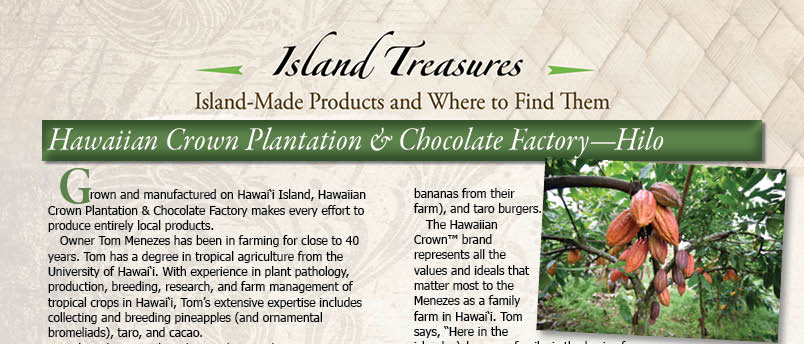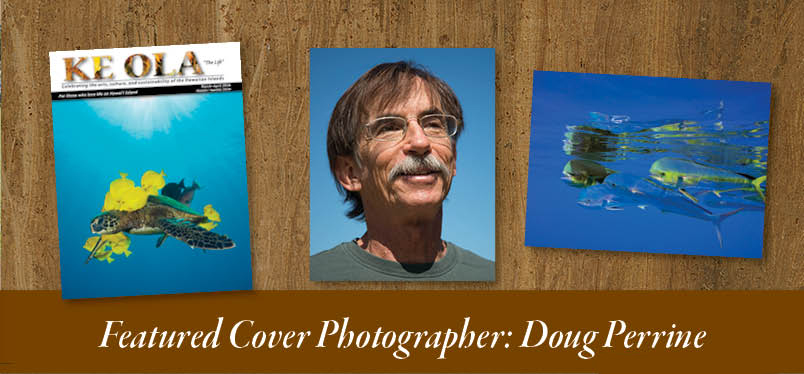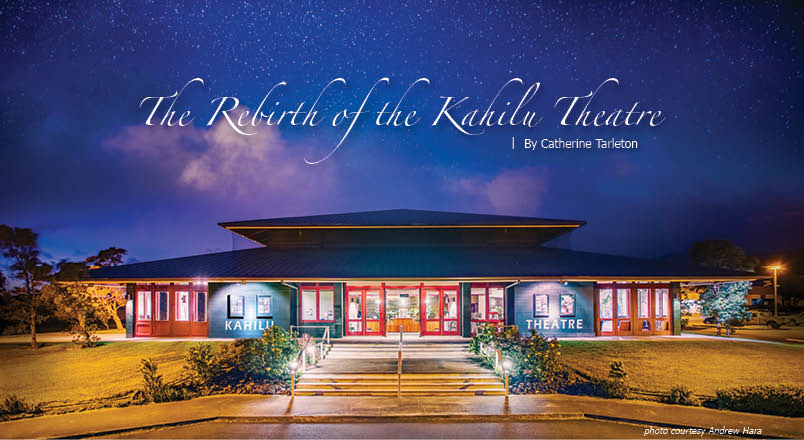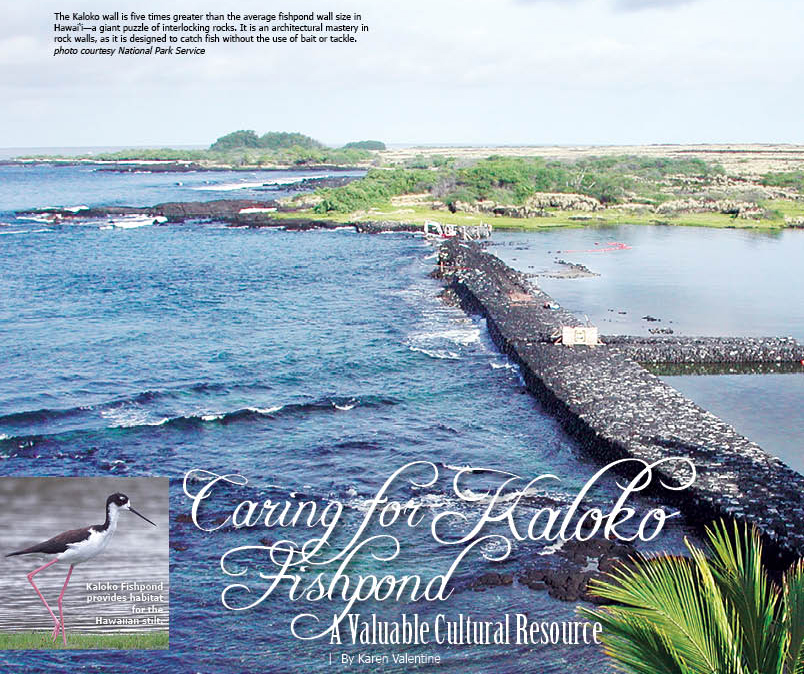
Caring for Kaloko Fishpond: A Valuable Cultural Resource
 A long the desolate western coastline of Hawai‘i Island, not too far north of Kailua-Kona, lies a property more valuable than the multi-million-dollar homes and resorts that distinguish the area. At least it was to the ali‘i—the chiefs and chiefesses of Hawai‘i—who knew the value of Kaloko Fishpond. It was a precious resource that fed the people of the land there, and one of three fishponds under the protection of the National Park Service at Kaloko-Honokōhau National Park.
A long the desolate western coastline of Hawai‘i Island, not too far north of Kailua-Kona, lies a property more valuable than the multi-million-dollar homes and resorts that distinguish the area. At least it was to the ali‘i—the chiefs and chiefesses of Hawai‘i—who knew the value of Kaloko Fishpond. It was a precious resource that fed the people of the land there, and one of three fishponds under the protection of the National Park Service at Kaloko-Honokōhau National Park.
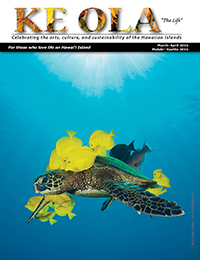
If you follow a dirt-and-rock road leading makai (toward the ocean) from the cars whizzing by on Queen Ka‘ahumanu Highway today, you’ll discover for yourself the oasis with its massive stone wall that divides the ocean surf and the vast, shallow pond filled with silvery fish slapping and jumping in the sunlight.
Legend says the menehune built the first seawall—called a kuapā—or that lines of men miles long passed the pōhaku (stones) hand-to-hand to construct the 30-to-40-foot wide wall stretching 250 yards (the length of two and a half football fields to modern minds) across the entrance to Kaloko Fishpond, which is some 11 acres in size.
This is the structure that saved the culturally significant ponds from the bulldozer during the 1970s, when a development was proposed for the area, says Ruth Aloua, a Native Hawaiian and community volunteer committed to Kaloko-Honokōhau.
“When the developers wanted to develop this land, they said there was nothing archeologically significant, but there was a portion of the original wall foundation that really saved this from development.”
The kuapā stood for hundreds of years and was maintained and used as an early form of fish farming into the 19th and early 20th centuries. As the population shifted away from the shoreline that once was dotted with fishing villages, the fish from Kaloko Fishpond were transported to markets in Kailua-Kona for a time. Eventually, the wall fell into disrepair and the ocean gradually deconstructed it, rock-by-rock, in the winter storms. Fortunately, a foundation remained and so the site came under the stewardship of the National Park Service as part of Kaloko-Honokōhau National Park in 1978.
Ruth, who worked as an interpretive ranger for the park during her years at Hawai‘i Community College from 2008 to 2011 adds, “The whole area around here was conservation land in the 1970s, however this land at Honokōhau was classified as urban, meaning it was to be developed, and that spurred a movement to protect Honokōhau. The fishponds were significant.”
The National Park was formed, and local masons familiar with the ancient Hawaiian building process were consulted and recruited to help the huge undertaking of restoration. The Kaloko wall is five times greater than the average fishpond wall size in Hawai‘i—a giant puzzle of interlocking rocks. No concrete is used, and the stones are not shaped. Local rock wall builders describe the work not so much as placing the rock in the right spot, but listening to where the stone wants to be. The Hawaiians were architectural masters in building rock walls, as this one is designed to catch fish without the use of bait or tackle.
The kuapā is porous. Water flows through and into the wall, helping to absorb the battering energy of the waves.
This description from the National Park Service website describes the ingenuity of the structure: “Watch the water break along the wall. The angle of the kuapā deflects the wave. Notice the pattern of breakers before they reach the wall. The waves build and break on a reef outside. Then they build again. The wall is deliberately placed at the point just before they break a second time, robbing them of their power. Engineers with laser transits and satellite data could not have done better.”
Ruth grew up in the neighboring ahupua‘a of Kealakehe. She attended schools there and went on to HCC. “I really wanted to work outdoors and with our culture and our people,” says Ruth. “Being a student allowed me to bypass some of the barriers that local people would usually have in getting work with the agency.”
Getting in touch with the land and learning about it inspired Ruth to do more. “I always wanted to help bring new life and revamp this place like it was created to be in its vision in the 1970s. The vision behind it was to rehabilitate it as a functional landscape with people from the area being allowed to participate. I want to help the park service do that, to bring the ponds back and allow people to fish from the pond. All fishponds have their own unique mo‘olelo (stories) with their own sense of place. They are still meant, in my vision, to be food producing. It’s a part of being self-sufficient. Our ancestors understood how to take care of the ponds and this place.”
Ruth left to finish higher education, first at UH Hilo, where she graduated with a BA in Anthropology before going on to get her Master’s in Archeology at Simon Fraser University in Canada. There, she wrote her thesis as a case study on Kaloko-Honokōhau.
Her research sought to identify and create opportunities to engage Native Hawaiian communities as archeological research partners in the local area. Her goal was to create a community-based stewardship plan to help Native Hawaiians share their personal histories and connections to the area.
“The project I developed emphasized the importance of community involvement,” Ruth says. “I wanted to work with my community to understand how they thought the Park Service could better fulfill the goals set out in the park’s enabling legislation. I also hoped to make things better, by creating recommendations for the Park Service, so that they could better work with kanaka ‘ōiwi (Native Hawaiians) and other locals to achieve their goals. In my Master’s thesis, I studied scientific objectives along with management practices and how they helped fulfill their mandate and also how barriers are created. For my study, I analyzed approximately 80 documents and completed 19 recorded interviews. I shared experiences with both community members and Park Service staff.”
Now that Ruth is back on the island, she seeks to further encourage the connection between the community and the National Park with monthly pond cleanup projects.
The Hawaiian word kaloko means simply “the pond.” Although most fishponds had their own specific names, as do the other two ponds at the park—‘Aimakapā and ‘Ai‘ōpio Fishtrap—Kaloko Fishpond has always been referred to by this generic term and also the name of the ahupua‘a in which it is located, which may indicate its historical importance.
Another researcher of the Kaloko area, Marion Kelly, traced the chronology of a continuing succession of Kaloko Fishpond caretakers and lessees through the early 1960s and also provided information on how the pond was fished and the experience of living near it. These residents periodically performed repair work on the walls of the pond and were responsible for developing some of the house sites surrounding it. In fact, many of these sites can be attributed to families still residing in the area.
“These ponds were cared for by various families,” says Ruth. “They were always food producing, whether they were feeding the warriors of Kamehameha or in recent years when they were harvesting the fish and sending it to Kailua-Kona.”
Secondary walls inside Kaloko Fishpond form three separate areas in which fingerlings were raised or in which different species of fish were segregated.
Kaloko is a loko kuapā, or walled fishpond, formed by sealing off a small bay. The wall contains a mākāhā, or sluice gate that can be raised or lowered to isolate the fish. The other two ponds at the park are ‘Ai‘ōpio Fishtrap, which was built by constructing a stone seawall out from the shore to form a protected body of water (considered a fishtrap rather than a fishpond because it lacks a sluice gate) and ‘Aimakapā Fishpond, a lagoon formed behind a barrier beach.
Kaloko Fishpond and ‘Ai‘ōpio Fishtrap are the only remaining large Hawaiian aquacultural structures with extensive ancient foundation remains in place in relatively good condition, according to the National Park Service.
“Kaloko pond today isn’t using the mākāhā, or a sluice escape so the fish are able to come and go,” says Ruth, “and there is a wide variety of fish here. The primary fish raised for food were the milkfish and the mullet. There is the larger fishpond in the center and four smaller ponds on the outskirts that can be used to stock certain fish or isolate certain sizes of fish.”
While Ruth is talking, the fish are jumping and birds call as they walk along the shoreline.
“The birds are really significant to this area,” she says, “because the fishponds provide them with a wetland habitat that’s disappearing today in Hawai‘i.”
To continue to bridge the gap between the community and the park service, she says, “Our work days are community led and community driven. The intent is to be a catalyst to get more of the people out here. My goal is to actually stock fish and have a hui (association) to take care of the fish. It’s all about relearning the ancestral knowledge and integrating it into practice to be able to provide life to the people and to the pond and honoring the spirit of this place.” ❖
Pond work days are the last Sunday of every month. See details on a special Facebook page for Kaloko Pond.
Fishing by pole is permitted at the pond, however nets are not allowed. Swimming, boating, and stand-up paddle boarding is prohibited. For more park rules, visit the Kaloko-Honokōhau National Park.
Contact Ruth Aloua
Contact writer Karen Valentine
